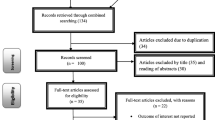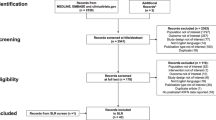Abstract
Background
The appropriate and timely administration of Anti-D immunoglobulin to Rhesus (D) negative women who have delivered Rhesus (D) positive babies is a vital part of obstetric care. Anti-D has an especially high profile in Ireland because of the tragic inadvertent transmission of Hepatitis C to Irish women in past decades.1
Audit
We have reviewed our policy and procedures pertaining to the administration of Anti-D for sensitising events during pregnancy and postnatally, in the Mid-Western Health Board in 1999/2000. As a result, major changes were made in the storage, issue, recording and administration of Anti-D. New procedures in the transfusion laboratory and in the maternity hospital have been accepted by scientists and midwives and supported by haematology and obstetric medical staff. The pharmacy and haematology laboratory no longer have a role in this programme.
Implementation of multi-disciplinary change management
As a result of these changes, the storage, issuing and tracking of Anti-D has become the responsibility of the hospital blood bank. Measurement of foeto-maternal haemorrhage (FMH) is now the responsibility of bio medical scientists in blood bank, utilising both flow cytometry (increasingly recognised as the gold standard method) and the Kleihauer method (Kleihauer-Betke).The programme has moved from a doctor-administered IV Anti-D Ig, to a midwife-administered IM preparation. Prescription remains the responsibility of the doctor. These changes are facilitated by the protocol guided issue of the appropriate dose of Anti-D Ig by bio medical scientists to midwives.The issue of the Anti-D Ig occurs simultaneously with issue of results of mother and baby’s serology testing and estimation of volume of FMH. These major changes have been guided by audit and needs assessment and require close liaison between medical, nursing and laboratory scientific staff in haematology, transfusion and obstetrics.
Critical incident audit-case report
Before new procedures became official policy a critical incident audit allowed us to pilot our protocol and to revise it using draft new procedures. In this critical incident we describe successful management of a patient with a large foeto-maternal haemorrhage. This incident supported the need for the procedural enhancements already underway This critical incident re-emphasised the need for the planned systems improvements to be introduced quickly.
Similar content being viewed by others
References
Power J, Kenny-Walsh E, Whelton MJ et al. Hepatitis C viraemia in recipients of Irish intravenous Anti-D immunoglobulin.Lancet 1994;344:8930:1166
Bowman JM. RhD hemolytic disease of the newborn.N. Engl. J. Med. 1998; 339(24):1775–7
Wegmann A, Gluck R. The history of rhesus prophylaxis with Anti-D.Eur J Pediatr. 1996; 155(10):835–8
Tovey G, Wagstaff W. Prevention of haemolytic disease of the newborn due to Anti-D.Br. Med. J. (Clin. Res. Ed). 1981 283(6284):142.
Contreras M. The prevention of Rh haemolytic disease of the fetus and newborn -general background.Br.J. Obstet. Cynaecoi 1998; 105 Suppl 18:7–10. Review.
Royal College of Obstetricians and Gynaecologists Consensus Conference on Anti-D Prophylaxis. Consensus Statement,Transfusion Medicine, 1997. 7, 143–144.
Duguid JK, Bromilow I. Value of Kleihauer testing after administration of Anti-D immunoglobulin.Br. Med. J. 1994; 309(6949):240.
The Estimation of Fetomaternal Haemorrhage BCSH Blood Transfusion and Haematology Task Forces.Transfus Med 1999:9; 87–92.
Joint Working Group of the British Blood Transfusion Society and the RCOG. Recommendations for the use of Anti-D immunoglobulin for Rh prophylaxis.Transfusion Medicine 1999, 9:93–7.
Dittman S, Roggendorf M, Durkop J et al. Long term persistence of hepatitis C virus antibodies in a single source outbreak.J. Hepatol 1991:13:323–27.
Lawlor E, Power J, Garson J et al. Transmission rates of Hepatitis C virus by different batches of a contaminated Anti-D immunoglobulin preparation.Vox Sang 1999; 76:135–7.
Smith DB, Lawlor E, Power J et al. A second outbreak of hepatitis C virus infection from Anti-D immunoglobulin in Ireland.Vox Sang 1999:76:175–80.
Finlay Report of the Tribunal of Enquiry into the BTSB (1997).
Bichler J, Spycher MO,. Amstutz HP et al. Pharmacokinetics and safety of recombinant anti-RhD in healthy RhD-negative male volunteersTransfusion Medicine 14; 165; 2004.
uidance on the use of routine antenatal Anti-D prophylaxis for RhD-negative women. National Institute of Clinical Excellence UK.
Tovey LAD, Townley A, Stevenson BJ. Taverner J. The Yorkshire antenatal Anti-D Immunoglobulin trial in primigravidae.Lancet 1983 2:244–246.
Cahill MR, Joyce S, O’Brien N, Casey M. Haemovigilence is associated with decreased use and improved appropriateness of blood transfusionVox Sang 2003; 2:121–2
Directive 2002/98/EC of the Eurpoean Prliament and of the Council setting standards of quality and safety for the collection, testing processing storage and distribution of human blood and blood components.
EM Love, KS Shwe, SJ Urbaniak et al. Kleihauer testing need not be abandoned.Br. Med J. 1994; 309 (6957):806.
Greiss MA, Armstrong-Fisher SS, Perera WS, Brown PM, Urbaniak SJ. Semiautomated data analysis of flow cytometric estimation of fetomaternal haemorrhage in D-women.Transfusion 2002; 42:1067–1078.
UK NEQUS FMH (2002) Biennial Report Haffner G, Kayser T, Jonjes A, Volkers P. Validation of flow cytometry to quantify the potency of Anti-D immunoglobulin preparation.Vox Sang 2003; 84:129–36.
Author information
Authors and Affiliations
Rights and permissions
About this article
Cite this article
Ryan, M.J., Joyce, S., O’Brien, N. et al. The issue of Anti-D: An integrated seamless approach from recognition of need to bedside administration. Ir J Med Sci 174, 58–63 (2005). https://doi.org/10.1007/BF03169150
Issue Date:
DOI: https://doi.org/10.1007/BF03169150




